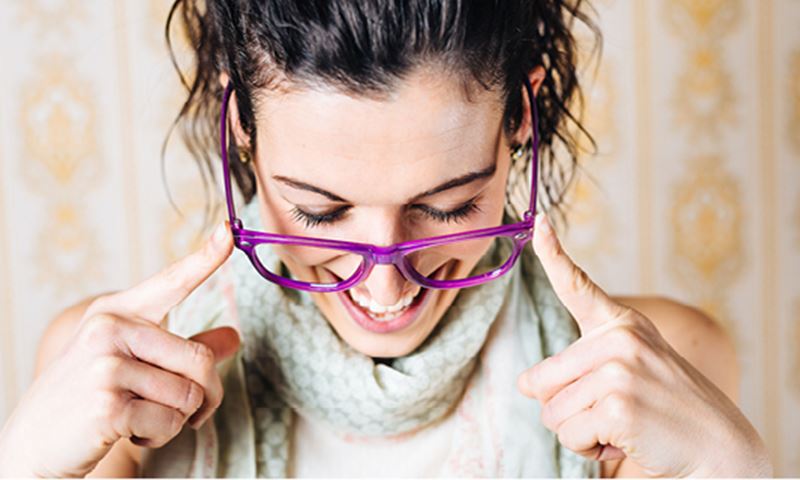Getting your eyes tested – what you need to know
GMHBA Eye Care optometrist Daniel talks about the commonly asked questions people have around getting their eyes and vision tested.
Having a regular vision test is relatively straight forward, but if it’s been a while since your last check up, or you’ve never had one, we’ve put together the answers to the most commonly asked questions we receive.
What happens during an eye test?
Having your eyes examined normally takes up to 30 minutes. It may take longer if more detailed testing is required. Typically, an eye examination will include:
1. A detailed history
Your optometrist will ask some general questions. Are you having any specific problems with your eyes or vision, or are you here for a routine check-up?
Questions may then be targeted around your general health. For example, are you taking any medications and do you suffer from high blood pressure, high cholesterol, diabetes, or any other conditions?
Your optometrist will also want to know about any health related eye conditions in your family (do any members suffer from glaucoma or macula degeneration?). It’s a good idea to talk to family members about any diagnosed eye conditions in case they may be something you should be keeping an eye out for.
2. Vision testing and measuring your prescription
Unaided vision (without glasses or contact lenses) is generally measured first. If you are a spectacle or contact lens wearer, vision will again be taken while you are wearing these. Patients should always try and remember to bring their glasses or contact lenses with them to their consultation.
Your optometrist will then determine your glasses prescription by asking you to choose between different lenses to see which one improves the clarity of your vision.
Binocular vision testing allows your optometrist to see if any undue stress is being placed on the muscles that control your eyes focusing and movement.
3. Eye health
Both the inside and outside of your eyes will be thoroughly examined, potentially identifying any health related eye conditions that may be present. Pupil reflexes will also be observed.
Sometimes your optometrist may need to administer eye drops to enlarge your pupils for a more thorough internal eye assessment.
Measuring your eye pressure helps screen for glaucoma.
Following the examination, your optometrist will carefully explain the results and discuss their recommendations based on your clinical findings. This will include the need for glasses and any further testing that may be required.
How often should we have our eyes examined?
The frequency you should have an eye test really depends on your age and visual situation.
| Age Group | Regularity of examination | Details |
|---|---|---|
|
Children |
Every 2-3 years |
Kids should be checked as babies and then again before they first start school. During school years, eye examinations every 2-3 years are generally acceptable unless vision problems or learning difficulties are present. In this case more frequent testing may often be required. |
|
Teenagers |
Every 2 years |
Two yearly examinations are recommended, however due to increased school and study demands teenagers may often report focusing difficulties, headaches and tried eyes. If this occurring more frequent testing may be encouraged. |
|
Adults under 65 |
Every 2 years |
More frequent testing may be required if specific eye problems are present. |
|
Over 65 |
Yearly |
Yearly check-ups are recommended. More frequent testing may be required if specific eye problems are present. |
Generally your optometrist will notify you when you are due for you next eye examination. It is important to remember however, you should always return sooner if you notice any changes to you vision or if you have any concerns.
What does an eye test cost?
At GMHBA Eye Care, most optometry consultations will be bulked billed with no out of pocket expense, however there are some situations where bulk billing cannot be applied. For example, some contact lens appointments and digital retinal imaging. The team at GMHBA Eye Care will always advise of any fees prior to providing a service.
Do I need a referral to have my eyes tested by an optometrist?
No, a referral is not required. You can book a test yourself when you are due, or book a test if you believe your circumstances have changed.
What’s wrong with ready-made spectacles?
While patients may appreciate the convenience and magnification ready-made spectacles provide, for the following reasons, optometrists will generally always encourage the use of custom made of glasses:
- Ready-mades are a one size fits all spectacle with no astigmatism correction. This means if you suffer from astigmatism these glasses will not fully correct your vision and some residual blur will still be present.
- The centre of each lens is a pre-set distance apart. It is therefore highly likely the centre of each lens will not be aligned with the centre of your pupil, increasing the potential for eyestrain and in some cases, double vision.
- In ready-made spectacles both lenses are always the same power. This results in sub-optimal clarity for people who have different prescriptions in each eye (approximately 80% of the population).
- Ready-made spectacles rarely offer the benefits available with custom lenses including UV protection, anti-scratch coatings, blue light filters and impact resistant lenses
For these reasons, ready-made spectacles should only be used for temporary and emergency situations.
What is 20/20 vision?
20/20 is a measure of visual acuity. If a patient has 20/20 vision it means at 20 feet, they were able to read what a ‘normal’ person could read at 20 feet. In Australia though, we typically measure things in meters, so 20/20 is actually 6/6!
Ideally we would like everyone to be able to achieve 6/6 vision, or better. Very often though, patients will not be able to achieve 6/6. For example, a patient may only be able to read the 6/9 line, meaning that at 6 meters they could only manage what a normal person could see at 9 metres, so the letters had to be 1.5 times larger.
Similarly 6/12 would mean that at 6 metres the patient could only manage what a normal person could see at 12 metres, meaning it had to be 2 times larger. A minimum of 6/12 vision is required for a standard driver’s license in Australia.
What should I bring to my eye examination?
- Any current glasses/contact lenses
- A list of your medications
- GP details
- Ophthalmologist details (if applicable)
- Medicare card
- Pension card
- Details of any private health insurance
- Availability diary (if a follow-up appointment is required)
I hope this answers some of the questions your may have had regarding having your eyes examined. If you would like to have your eyes tested please contact your local GMHBA Eye Care practice.



